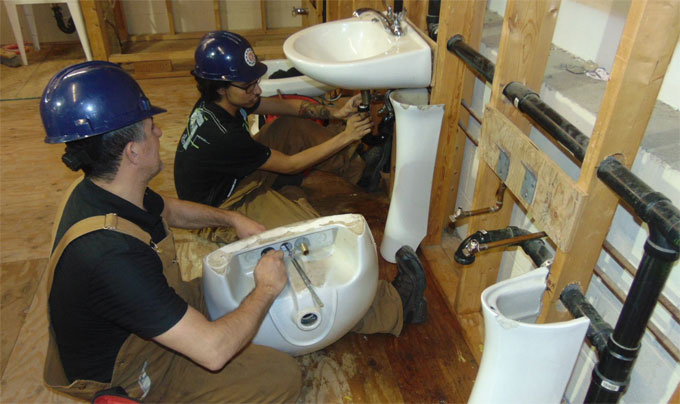
Some common issue in building plumbing system

Plumbing installations play a vital role in buildings since these supply clean water to several types of plumbing fixtures and then send used water to the sewage system. Water should be delivered uninterruptedly and safeguarded from contagion, and drain pipes should have sufficient diameter and no obstructions.
In this article, you will be familiar with common plumbing issues and how to get rid of them.
Preferably, plumbing installations should be done in an optimal way from the project design stage since restructuring a defective system in an existing building becomes complicated because there are several pipes implanted in floors and walls.
1) Defective Venting in Plumbing Lines
When there is not sufficient venting, flow is obstructed and fails to take away used water from fixtures quickly. Under plumbing systems, vents should arrange proper air movement into the pipes, but devoid of allowing odors out. The venting design also combines stacks which are extended to the rooftop, making sure that odors are discharged without affecting anybody.
2) Backflow
Backflow comprises of water movement opposite to the proposed direction in a pipe. The backflow occurs for the following reasons:
? Back siphonage means a cutback in upstream pressure. As for instance, water supply pressure is reduced with an abrupt surge in consumption.
? Back pressure means a surge in downstream pressure. As for instance, in high-rise buildings, gravity drive the water back that is stored in the piping system and the supply pressure should be considerably high enough to overcome this effect.
In both cases, variation in pressure occurs opposite to the proposed flow direction, and backflow happens unless the piping system manages to stop it. The concept of a cross-connection is applied to specify any existing or probable connection among a clean water supply and a non-potable fluid.
Any device or building system providing pressurized water develops a cross-connection, and automatic sprinkler systems. As cross connections can?t be removed, they should be supported with backflow preventers. They include different components like check valves, vacuum breakers and detector assemblies.
3) Corrosion
Corrosion erodes metallic elements as well as gradually reduces their load-bearing strength. In the case of plumbing, corroded pipes are prone to breaking with impact or bursting under extreme pressure.
lvanic corrosion is a particular type that happens when different metals remain in physical contact. There should be no contact among dissimilar metals and preventive measures should be taken when it is not possible. Given below, some effective erosion preventing measures:
? Electrical insulation.
? Avoiding contact with water with an water-resistant coating or paint
? Electroplating metals with a corrosion-resistant metal like chromium.
? Inclusion of a sacrificial anode - a third metal that is more exposed to corrosion, sparing the metallic components you want to protect.
Other remedies: Material inspection and test result according to IS codes. Pipe tolerance (the angle deviation of bends should remain within +-1 degree of the designated for pipes along with 600mm dia and + ? 0.5 mm for bigger dia pipe. Fitting should be within + -10mm of the designated length or the manufacturer catalogue values).
No crack should exist in the inside of the pipe. Scratches should not be in excess of 0.3mm. Defective parts should be changed immediate. Follow the recommendations of manufacturers while joining pipes of diverse materials. No leakage of foul water. Materials, joints, supports and fixing should be long lasting. Provide sealant to all joints carefully. Work /all appliances/ materials & workmanship should be checked properly for defects and faults in installation. Provide proper support/thrust blocks. No airs should present at bended corners


